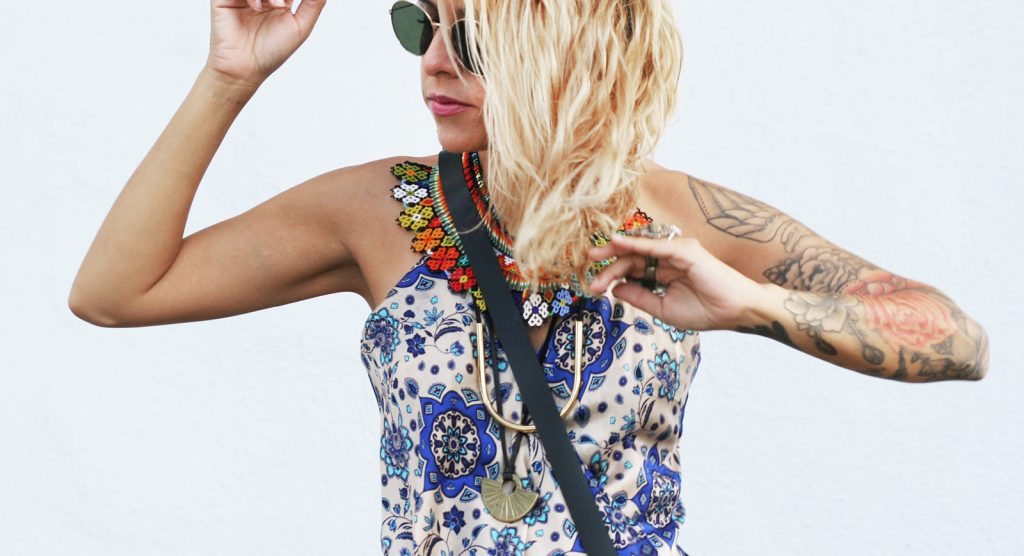Environmentally and ethically responsible consumption and productions are two of the main themes behind the Canada-based TAMGA Designs. A brainchild of Yana Barankin and Eric Dales, the fashion brand focuses on using sustainable materials and ethical manufacturing and production in hopes of influencing the present and future of the fashion industry.
“The fashion industry is beautiful,” Yana said. “It’s creative, it’s expressive, but this shouldn’t be at the expense of people who work in it.”
The company began in 2014 when her and her fiancé Eric were living in Dhaka, Bangladesh. After seeing where most clothing brands were being manufactured, they decided they had to find a way to help turn around the fashion-manufacturing industry. Initially, TAMGA was an experiment to see if great fashion could be produced in a responsible and marketable way. Yana said shortly after they opened their Etsy shop, the demand outgrew the small supply chain and soon enough after that they quit their full-time jobs, jumped on a plane to Indonesia and began focusing on being environmentally conscious and accountable in clothing production.
Yana explained that most of the exploitation in clothing manufacturing occurs because brands know very little about what is actually happening when their clothing is being made. Instead of just looking for the lowest prices, good quality and on-time delivery, Yana and Eric want both brands and suppliers to focus on social and environmental concerns rather than just price and efficiency.
The pair spent eight months in Indonesia building relationships and creating a group of suppliers for their Dreamweaver collection. “We chose to work with each one of them because they recognize the value of treating people and the planet with respect, and they have the industry-leading certifications to prove it,” she shared. “When a factory doesn’t understand why they should care about these things, it’s hopeless to try and make them.”
“Instead of just looking for the lowest prices, good quality and on-time delivery, Yana and Eric want both brands and suppliers to focus on social and environmental concerns rather than just price and efficiency.”
They spent months hopping around the islands and making connections and building relationships in local communities. Inspired by Indonesian textiles, the fabrics in the collection are made of sustainable sourced wood and natural dyes. Indigo is present throughout the entire collection because of the connection it made them feel to the sky and ocean in Bali. It allowed them to reflect their love for Mother Nature through their designs. During their search, they saw many bad factories and it made them thankful for their suppliers. Yana said that in order to ensure protection for their workers and the planet, they ask each of their suppliers to sign the Supplier Code of Conduct on their website.
The couple arrived in Dhaka right after the 2013 Rana Plaza collapse, where more than one thousand workers died while making clothing for the Western markets. “This is crazy,” Yana exclaimed. “No one should have to suffer to create a dress or shirt.” The fashion industry has a massive impact on the environment, she stressed. Right behind the oil industry, the fashion industry is the second biggest polluter in the world. TAMGA Designs works toward breaking out the norm and creating clothes that are not only better for the environment but also the people who create them.
“The fashion industry has a massive impact on the environment, she stressed. Right behind the oil industry, the fashion industry is the second biggest polluter in the world.”
“Wouldn’t it be great if we called some fashion ‘unethical’, and the rest was just normal?” The couple finds their inspiration in their travels. The architecture, cuisine, and local textile art all play a role in their designs. “Traveling is a constant creative stimulation, as soon as you get comfortable, everything changes,” she said.
TAMGA Designs has grown since its beginnings but continues to be still small-scale and personable. The pair has gone from producing maybe 20 kimonos each week to hundreds of yards of the needed fabric weekly, allowing them to expand their supply chain and appeal to a larger market.
by Julia Kramer
Our editor-in-chief shares her favorite TAMGA pieces and simple ways to wear them…









